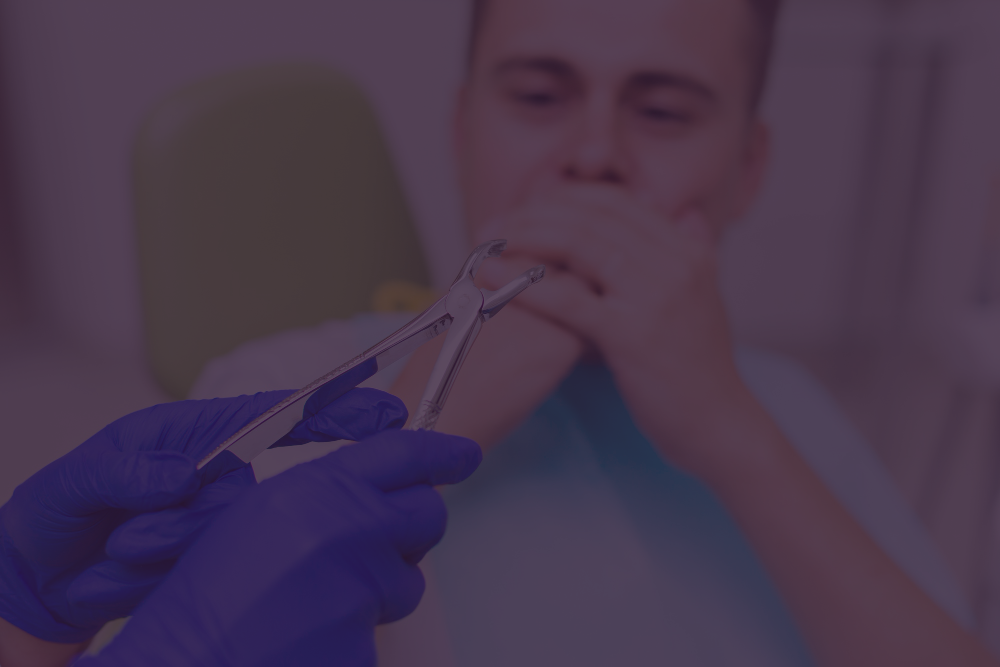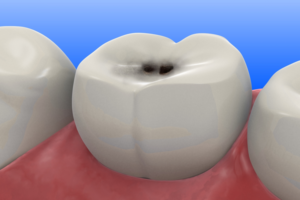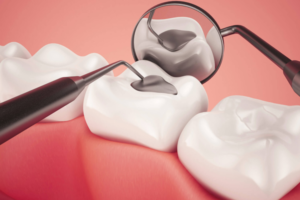
Tooth Extraction
What is Tooth Extraction?
Tooth extraction is the removal of a damaged or decayed tooth that cannot be repaired. This procedure is typically performed to alleviate pain, prevent further oral health issues, or make room for other dental treatments such as braces or implants. At Vijay Dental Miyapur, we provide gentle and professional tooth extraction services as part of our General Dentistry in Miyapur. If you experience severe tooth pain or discomfort, our team will assess your condition and recommend the best course of action, which may include tooth extraction.
Regular routine dental checkups can help identify potential issues early, preventing the need for extractions and ensuring your long-term dental health. Visit Vijay Dental Miyapur today for expert care and guidance.
Benefits of Tooth Extraction: Improving Oral Health and Comfort
Tooth extraction is a common dental procedure designed to remove damaged or problematic teeth, offering a range of benefits that can significantly improve your oral health and overall well-being. While the idea of extracting a tooth might sound daunting, it can be the key to resolving persistent dental issues and preventing future complications.
1. Relief from Persistent Pain
A decayed or damaged tooth can cause severe discomfort, making everyday activities like eating and speaking challenging. Tooth extraction eliminates the source of pain, providing immediate relief and restoring your quality of life.
2. Preventing the Spread of Infection
Infections caused by decayed or abscessed teeth can spread to other areas of your mouth or even to other parts of the body. Tooth extraction removes the infected tooth, stopping the spread of bacteria and safeguarding your oral health.
3. Creating Space for Orthodontic Treatment
For individuals undergoing orthodontic treatments, tooth extraction can create the necessary space to align teeth properly. This ensures a straighter smile and prevents overcrowding that could lead to bite issues.
4. Protecting Neighboring Teeth
Sometimes, a severely damaged tooth can harm surrounding teeth. Extracting the problematic tooth prevents unnecessary strain or infection on neighboring teeth, preserving their health and functionality.
5. Improving Overall Oral Health
By removing a compromised tooth, you enhance the cleanliness of your mouth and make it easier to maintain a consistent oral hygiene routine. Tooth extraction is a proactive step toward achieving a healthier smile.
Fluoride Applicaton
Fluoride Application | General Dentistry in Vijay Dental Miyapur
Fluoride application is a preventive dental treatment that helps strengthen tooth enamel and protect against cavities. During this procedure, a concentrated fluoride gel or varnish is applied to the teeth, promoting remineralization and providing an extra layer of protection against tooth decay. It’s a quick and painless treatment, ideal for patients of all ages.
At Vijay Dental Miyapur, as part of our General Dentistry in Miyapur services, we recommend fluoride application during routine dental checkups to help maintain optimal oral health and prevent future dental problems. Regular fluoride treatments, combined with proper oral hygiene, are key to maintaining a healthy, cavity-free smile.
Benefits of Fluoride Application for Oral Health
Fluoride Application is a proven and effective method for enhancing oral health and preventing tooth decay. This simple and non-invasive treatment strengthens teeth and provides long-term protection, making it an essential part of preventive dental care. Below are the key benefits of Fluoride Application:
1. Strengthens Tooth Enamel
Fluoride Application reinforces the outer layer of your teeth, known as enamel. This makes teeth more resistant to acid attacks caused by bacteria and sugary foods, significantly reducing the risk of cavities.
2. Prevents Tooth Decay
One of the primary benefits of Fluoride Application is its ability to prevent tooth decay. By re-mineralizing weakened areas of the teeth, fluoride stops cavities in their tracks and even reverses early-stage decay.
3. Safe for All Ages
Fluoride Application is suitable for children and adults alike. While children benefit from stronger teeth, adults find it effective for combating enamel wear and protecting against cavities caused by receding gums.
4. Cost-Effective Preventive Care
Investing in Fluoride Application can save you from more extensive and expensive dental procedures in the future. By maintaining strong, healthy teeth, you reduce the likelihood of needing fillings, crowns, or root canals.
5. Protects Against Sensitivity
Fluoride Application helps to seal exposed dentin on teeth, reducing sensitivity to hot and cold foods. This benefit adds to your overall comfort and enhances your quality of life.
Incorporating Fluoride Application into your dental routine can make a significant difference in your oral health. Talk to your dentist about scheduling regular fluoride treatments to ensure your smile stays strong and healthy for years to come!
Teeth Cleaning
What is Teeth Cleaning?
Teeth cleaning is a vital dental procedure that removes plaque, tartar, and stains from your teeth, promoting better oral health and preventing cavities, gum disease, and other dental issues. During a professional cleaning, a dentist or hygienist uses specialized tools to clean areas that are hard to reach with regular brushing and flossing.
At Vijay Dental Miyapur, we offer thorough teeth cleaning as part of our General Dentistry in Miyapur services. Regular cleanings, combined with routine dental checkups, are essential to maintaining a healthy smile and preventing long-term dental problems. Schedule your appointment today and experience the benefits of a clean, fresh smile!
The Benefits of Teeth Cleaning: A Healthy Smile Starts Here
Regular teeth cleaning is more than just a cosmetic procedure—it’s a cornerstone of oral health that can positively impact your overall well-being. Professional cleanings go beyond what daily brushing and flossing can achieve, ensuring your teeth and gums stay in top condition.
1. Prevents Cavities and Tooth Decay
Plaque buildup is a leading cause of cavities, and no matter how diligently you brush, some areas are harder to reach. A professional teeth cleaning removes stubborn plaque and tartar, reducing the risk of decay and protecting your natural teeth.
2. Fights Gum Disease
Gum disease starts with inflammation caused by plaque along the gumline. Regular teeth cleaning helps remove bacteria that can lead to gingivitis or periodontitis, preserving your gums and preventing tooth loss.
3. Freshens Your Breath
Persistent bad breath, or halitosis, can often be traced back to poor oral hygiene. Routine teeth cleaning eliminates food particles and bacteria that cause unpleasant odors, leaving your mouth fresh and clean.
4. Brightens Your Smile
Professional teeth cleaning removes surface stains caused by coffee, tea, wine, and other lifestyle factors. It restores the natural whiteness of your teeth, giving you a confident, radiant smile.
5. Boosts Overall Health
Oral health is closely linked to your overall health. Regular teeth cleaning reduces the risk of systemic issues like heart disease, diabetes, and respiratory infections by minimizing harmful bacteria in your mouth.
Investing in professional teeth cleaning not only enhances your smile but also safeguards your health for years to come. Schedule your appointment today and experience the transformative benefits of a healthy, sparkling smile!
Bleaching
What is Bleaching?
Bleaching is a popular cosmetic dental treatment designed to whiten and brighten teeth, helping to remove stains and discoloration caused by factors like food, drinks, and aging. The procedure involves the use of safe whitening agents that lighten the enamel, resulting in a radiant, more youthful smile. At Vijay Dental Miyapur, we offer professional bleaching treatments tailored to your needs, ensuring optimal results with minimal sensitivity.
For a complete oral care routine, visit us for General Dentistry in Miyapur and routine dental checkups to maintain a healthy, bright smile year-round.
Benefits of Bleaching for a Brighter Smile
Bleaching is one of the most effective ways to achieve a radiant, confident smile. Whether you’re looking to reverse years of discoloration or simply enhance the natural brightness of your teeth, bleaching offers a safe and reliable solution. Let’s explore the top benefits of this popular cosmetic treatment
1. Enhances Your Appearance
A whiter smile can dramatically improve your overall look. Bleaching removes stubborn stains caused by coffee, tea, smoking, and other lifestyle habits, leaving you with teeth that look healthy and vibrant.
2. Boosts Confidence
Your smile is one of the first things people notice about you. Bleaching can restore your self-assurance by giving you a brighter, more attractive smile. This confidence can positively impact both your personal and professional life.
3. Quick and Effective Results
Professional bleaching treatments deliver noticeable results in a short amount of time. Many patients see a significant difference after just one session, making it a convenient choice for special occasions or daily confidence boosts.
4. Safe and Customizable
Modern bleaching techniques are designed to be safe for your teeth and gums. Dentists tailor the treatment to your needs, ensuring optimal results without compromising dental health.
5. Long-Lasting Brightness
When combined with proper oral hygiene and regular dental check-ups, the effects of bleaching can last for months. Maintaining a bright smile is easier than ever with professional guidance.
Achieve the radiant smile you’ve always wanted with professional bleaching. It’s a simple yet transformative way to enhance your appearance and boost your confidence! For more information on bleaching treatments, consult with our dental experts today.


